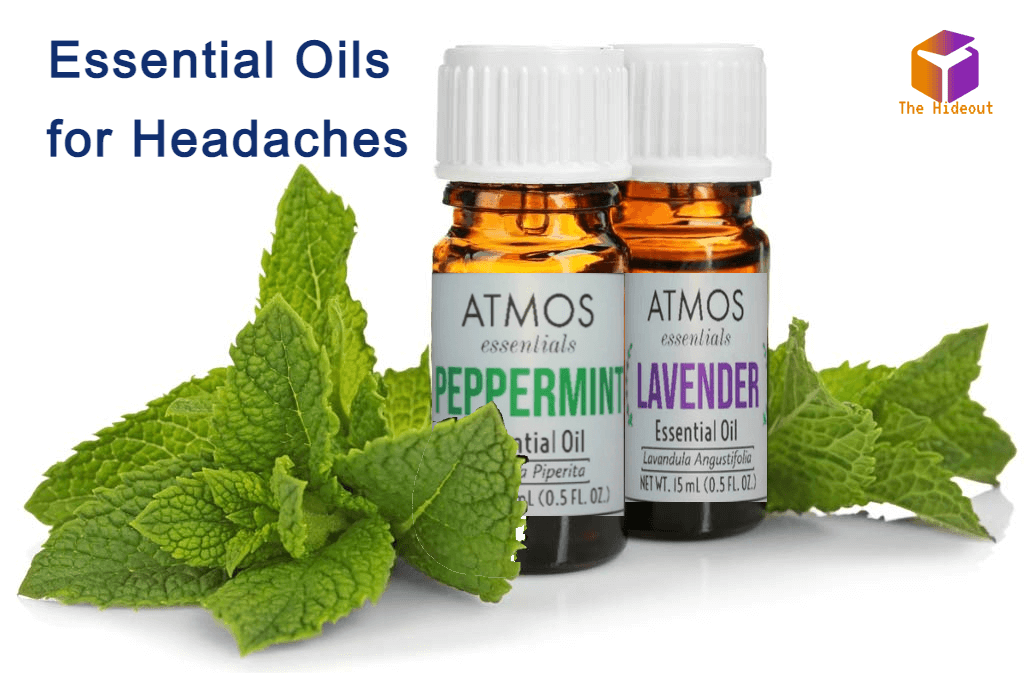Using essential oil for headaches, such as lavender or peppermint, to relieve a migraine or tension headache is becoming more popular. While the judgement is still out on its benefits (studies supporting their effectiveness are limited), it may be a prudent option in the proper circumstances and for the right person.
If anything, essential oil for headaches may alleviate your suffering by calming and relaxing you.
There are two essential oils that may be beneficial: lavender oil for headache and peppermint oil for migraine. We will be discussing about essential oil for headaches and migraine to help you buy the best oil for headaches!
Lavender Oil for Headaches and Migraine
Long known for its calming properties, lavender was utilized for healing reasons to cure migraine episodes, epilepsy, insect stings, parasite infections, burns, and tremors.

The usage of lavender oil to alleviate migraine attacks has resurfaced, and there is scientific evidence (although limited) to support its efficacy.
Scientific Evidence
Forty-seven migraine sufferers from one short study were split into two groups. During the initial stages of their attack, one group used 15 minutes to inhale lavender essential oil (two to three drops of the oil were rubbed onto their upper lip). The other group, known as the control group, applied liquid paraffin for 15 minutes.
For two hours, the participants were asked to track how severe their migraine headaches were at 30-minute intervals.
Participants who inhaled lavender essential oil experienced considerably less severe migraines than those in the control group, according to a pain scale called the Visual Analog Scale.
Peppermint Oil for Headaches and Migraine
Peppermint is a blooming member of the mint family native to Europe and North America.

While peppermint extracts are commonly used as flavoring (e.g., toothpaste or mouthwashes), peppermint oil, which is produced from the mint plant's stem, leaves, and blossoms, has been used to treat gastrointestinal problems, most notably IBS and indigestion.
Peppermint oil is also used to relieve headaches, particularly tension headaches.
Scientific Evidence
Two older studies discovered that putting peppermint oil on the skin can help relieve the pain of a tension headache. One of these trials even compared the efficacy of a 10% peppermint oil mixture to Tylenol (acetaminophen).
In that study, 41 volunteers with tension-type headaches were randomly assigned to either two Tylenol capsules or two placebo capsules. In addition, the subjects were randomly assigned to either a peppermint oil skin application or a placebo solution.
The oil or placebo solution was applied to the forehead and temples for 15 minutes, then 30 minutes. After that, the subjects recorded their pain intensity every 15 minutes for an hour.
When compared to a placebo, peppermint oil significantly reduced headache intensity after 15 minutes, and this pain reduction lasted for the whole one-hour observation period. 3 Surprisingly, no difference in benefit was discovered between peppermint oil and Tylenol.
Conclusion
While using an essential oil, such as lavender oil for migraine or peppermint oil for migraine, are an appropriate alternative therapy, make sure you only use it under the supervision of your doctor.
Although essential oils do not need a prescription, they can be poisonous and cause harm if misused or in those who have specific medical conditions. They may also conflict with the medications you are taking, and for some people, the aroma of essential oil may cause a headache or migraine.



